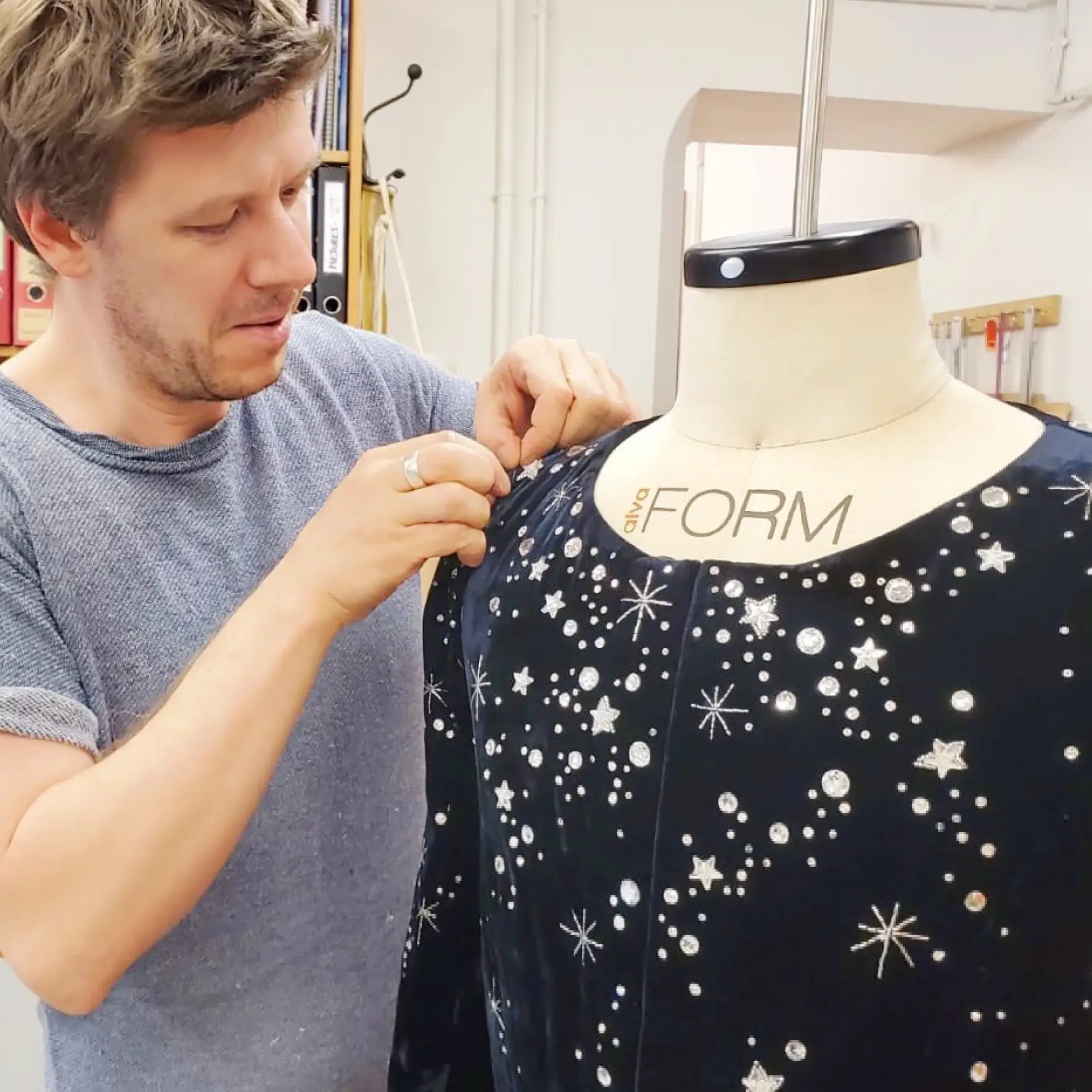A Message from Robin Lewis
I can’t beat on this topic enough. Read it! And read it yet again! Lousy fit and sizing are killing you by a thousand cuts. Huge and costly returns, worse, customers leave your brand, greatly frustrated and annoyed. You need a CFO, Chief Fit Officer. Renée tells you why, with great passion. And our collaborative partner, Alvanon, has been megaphoning this imperative for years. Just do it!
A Bad Fit
There’s a management crisis directly impacting the health and wealth of the apparel industry … and the planet. According to McKinsey’s “CEO Excellence” book, a robust dialogue correlates to good decision making more than data by a factor of 6. Can we talk?
Whether operating with aging platforms or investing in the latest and greatest, most if not all tech and data, fantastic as they are, are not in sync with the product itself. And to make matters worse, the product is out of alignment with today’s population.
The responsibility for empowering meaningful change is in the C-suite, but the sweet spot is the missing seat. “Ten percent of a typical organization’s highest value roles typically don’t exist but should,” according to McKinsey’s book. Overvaluing what worked yesterday is an obstacle to the opportunities of what is needed to work today. Many solutions to problems are not in sync with the tools and tech retailers are investing in. Take returns for example. And the high value role of a Chief Fit Officer in every C-suite.
McKinsey’s “Doing Digital vs Being Digital” podcast stated that “most companies achieve less than one-third the impact they expected from digital transformation.” In Deloitte’s CEO survey, 85 percent of CEOs are likely to use AI for advanced predictive analytics, 30 percent citing AI as priority #1 for core business transformation, while only 5 percent made “climate and sustainability” priority #1.
Are CFOs and CTOs making AI investment decisions for fit, sizing and returns tech? Do they understand the intricacies of fit engineering with its attached costs? Likely not. Yet they are the ones charged to make the business case for the spend believing they are innovating and fulfilling their C-Suite responsibility.
Returns Crisis
Retail Dive reported holiday returns were up by 57 percent for 2022 compared to the already proclaimed “record-breaking” rates one year ago. How does that make you feel? This one tsunamic statistic that literally makes me ill knowing returns are destroying profits and the planet. According to a recent NRF/Appriss report, the average return rate of clothing is 20.8 percent with rates having increased by 50 percent since 2020. For some retailers returns are outpacing sales. Further, upwards of 75 percent of returns could be avoided if retailers were more holistically proactive. Interestingly, NRF is forecasting a retail sales increase 4-6 percent for 2023. How? And what about those returns? No matter the source, there are two datapoints that should not be ignored another day. Fit and sizing, which are the holy grail of apparel retail — and the major reason for returns. It is also the biggest opportunity for acquiring and sustaining new customers.
Retail’s Seismic Shift Is Finally Upon Us
Whether operating with aging platforms or investing in the latest and greatest, most if not all tech and data, fantastic as they are, are not in sync with the product itself. And to make matters worse, the product itself is out of alignment with today’s population. Insisting they want to improve CX, most brands are unclear as to who the consumer is as she relates to the retailer’s execution of fit and sizing. The consumer has changed, and the state of fit with its growing-like-weeds list of size labels presents a unique language in desperate need for an overhaul. Finding the “needle in the returns bin-landfill” is to understand that fit and sizing, which are the core of the product creation equation, are essential to the rebirth of apparel retail.
Crunching the data while trying to predict the future is precious time wasted. On “The Nightmare After Christmas” Robin Lewis explains “bracketing” while Shelley Kohan is “surprised the number (return rates) is not declining with all the tech, AI, machine learning available.” Why is that?
WTF Is Key to Apparel
The devastation of returns is showing its ugly head organically. While the jury is out on the true cost, the jury selection process needs a re-look. If fit and sizing are the major reasons for returns (and new sales), wouldn’t an expert witness or forensic accountant be better qualified to testify? Stop duking out who pays for returns or insisting there’s no budget for fit (I’ll wait while you do the math) instead, be bold and put innovation into action.
Brands are still raising a “playing it safe” fist clenched on margin points, legacy infrastructures, hierarchal operating systems, and hope that tech is the Lone Ranger racing to the rescue. Too many businesses continue to erode by abandoning the consumer year after year. There’s no need for a crystal ball to predict what 2023 results will be unless we get into much-needed therapy to correct basic predictive decision making.
Can the apparel industry reengineer itself to flourish with the current mindset state of the C- Suite? From where I sit and practice, YES. Ian McGarrigle, Chair of World Retail Congress, discussed “resilient retail” as how retail leaders need to think radically and make some big decisions to move fast.” I couldn’t agree more.
The best way to predict the future is to create it. Who can best lead the way authentically and with accountability? Who can map and navigate the course for the future apparel ecosystem to reverse return rates and level the fit and sizing access field awhile organically supporting ESG and financial goals? Enter, again, the Chief Fit Officer.
The Art, Science, and Psychology of Fit
Brands can fix what they understand. But we have a language barrier with understanding hard tech but also on the qualitative soft stuff like fit. The product, how it fits and feels on the body, and how it makes us feel are not the same thing, although connected. Think left meets right brain. How clothes make us feel has a strong emotional and psychological impact on consumers’ shopping decisions. Understanding the difference is essential to crack the code of reducing returns.
Fit and sizing whether patterned digitally or “on the table,” or both, is a combo of the soft and hard — the craft and science of apparel engineering. Evolving the base core fit combines both. The size range offering 8-18 is hard, as is the grading — the increments of change between sizes. The application of the grading is an art. Fusing them together in harmony requires expertise.
To reverse the fit and sizing curse, look at the customer interface in the returns process and the reason they check off for the return. The typical “too big, too small, and I changed my mind” boxes don’t give fit its true voice. Rushing to process the return, the consumer, frontliner and/or chatbot, each following the same scripts, dump precious, soft data in the “other” box chock full of opportunity to be heard and seen.
It’s Not HER Fault
Though there is no one master industry standard size chart, Alvanon recently launched their NA size standards data that are comprehensively kick-ass. Are brands leveraging these tools to their full benefit? Each brand has its own guide usually somewhere on their website – often not so easy to find. Some families of brands (ex., Gap) have different size charts for each brand within the fit category. Others like Ann Inc. use the same base size chart for all brands but cut in different size ranges curated by each brand. Multi-brand platforms like HSN and Stitch Fix use generic size charts across all the different brands they offer. Confused? You are not alone. Ask your customers whom Klarna assigned blame to for not “searching through sizing charts to determine their correct size” in a paper discussing lenient return policies.
Future Fashion RX
The future fashion ecosystem is about action advocating for the consumer and the planet. The Chief Fit Officer is a set up to succeed for the WHOLE, from front enders to front liners and everyone between consumers and the bottom line. Filling this one seat allows for accountability. Let’s rewrite the contract with the consumer for net-zero returns. Make clothes she wants that fit. In exchange, every clothes wearing human would buy one/keep one … and repeat. Then we could send the Happy Returns founders into early retirement. Everybody wins.
Without C-suite ownership the downward spiral will track at warp speed. Making fit and sizing an imperative requires a comprehensive radical change to the business-as-usual mindset.




